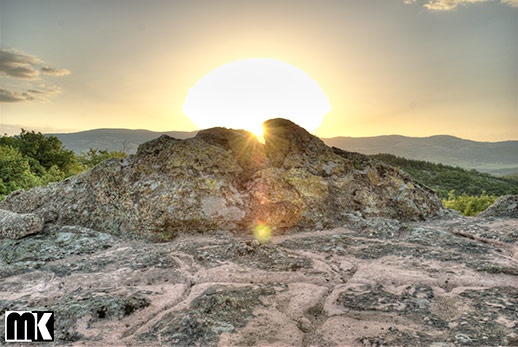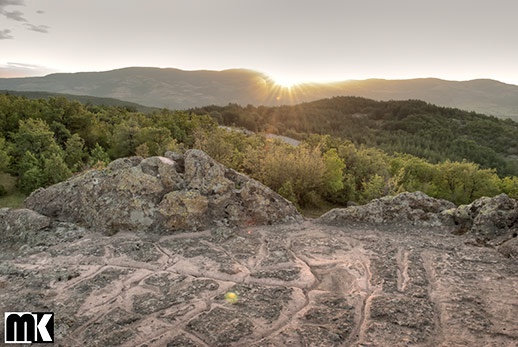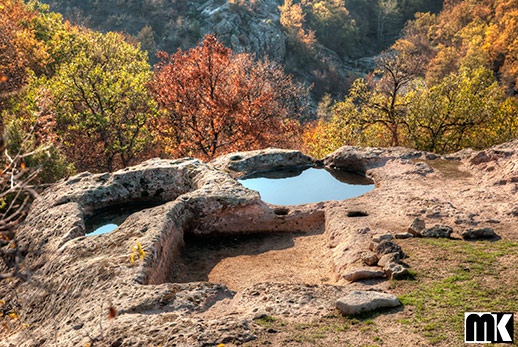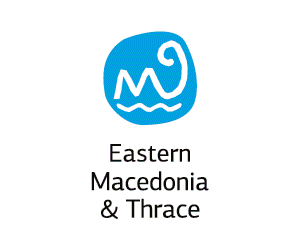Traveler's Guide
East Macedonia & Thrace
Thracian sanctuary "Harman Kaya" near the village of Bivolyane

Harman Kaya is a rock-hewn sanctuary on a plateau around a small natural cave with a depth of 7 m. In front of it, on the terrain surface, there is a great number of ceramic fragments, the oldest of which belongs to the late Eneolithic Age and the latest is dated back to the 1st -2nd century AD. There are carved trapezoidal niches in the vertical rock next to the cave entrance. At the foot of the plateau there is a karst cave, which is 20 meters deep and has traces of cultivation.
The inner sacred space is accessed through a crack between the rocks, which had been further developed as an entrance and enclosed with a door – there are traces of the grooves and the doorstep. There are numerous pits, shrines, and foundations of premises in the area of the external sacred place. Rock-hewn beds, trapezoidal niches and altars for sacrifices can be seen in the cliffs towering around. There are two rock platforms with a diameter of 10 m and 15.The first one, marked as the northeast one, is oval and slants slightly to the north.
There are six carved concentric semicircles, whose diameter constantly increases. In the rock at the west end of the platform, there is a carved throne. The second platform is almost round, with 11 concentric semicircles. At the northern end of this platform there is also a carved throne, facing northeast. Archaeo-astronomical studies of both rock-hewn platforms suggest that they probably served to measure the annual cycle and to establish summer and winter solstice. Studies have shown that the mega rock complex intended for such observations of the sun was created around the 2000 BC. It is assumed that the sanctuary began to function simultaneously with the one in the village of Tatul.
Remains of a large Thracian city have been found at the foot of Harman Kaya.Excavations revealed not only the outlines of the premises but also of the streets and squares. Masonry was without mortar, and the ceramics found dates between the 4th -1st centuries BC.
There is a rock-hewn tomb near the cult place in the rock slope above the river. Currently, there is no evidence that the cult complex Harman Kaya functioned in the Middle Ages whereas other rock-hewn cult places certainly did.
Address
No information available.Contact Information
No information available.








